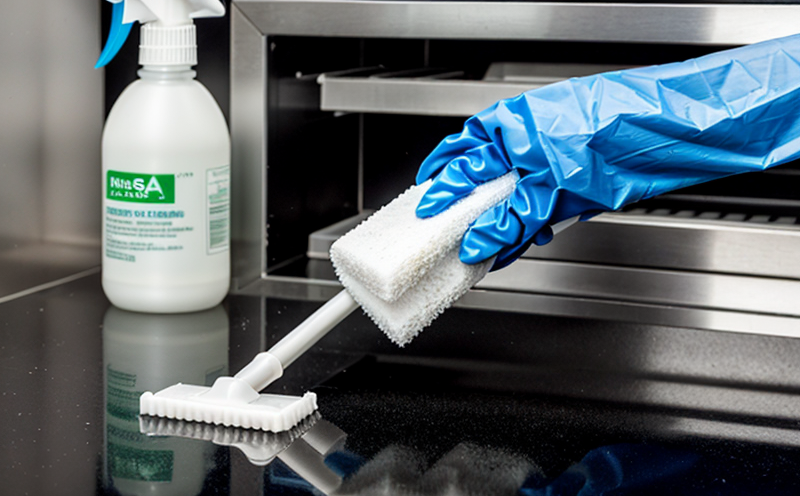DIN 58956 Plastics Hygiene Compatibility Testing with Cleaning Agents
The DIN 58956 standard is a crucial guideline in the plastics industry, ensuring that plastic materials used in hygiene and cleaning applications are compatible with various cleaning agents. This testing service ensures that plastics do not release harmful substances into contact with water or cleaning solutions, which could impact human health or lead to product degradation.
The test involves exposing plastic specimens to a range of cleaning agents under specified conditions and then assessing the surface for changes in color, texture, or any signs of contamination. This process helps ensure that the chosen plastics can maintain their integrity and safety when used in hygiene products like soap dispensers, hand sanitizers, and medical devices.
The DIN 58956 test is particularly important for manufacturers who need to comply with international standards and regulations. By adhering to this standard, they can demonstrate that their products are safe for use in hygiene applications without compromising the quality or durability of the plastic material.
This service also involves a detailed examination of the chemical stability of the plastics under various conditions, including temperature, humidity, and exposure to cleaning agents. The test parameters include the choice of cleaning agents, incubation times, and the measurement of any changes in the physical properties of the specimen after testing.
The DIN 58956 standard is widely recognized for its stringent requirements on plastic materials used in hygiene products. This service ensures that manufacturers meet these standards by providing accurate and reliable test results.
| Industry Applications | |||
|---|---|---|---|
| The DIN 58956 test is essential for the following sectors: | - Hygiene products (soap dispensers, hand sanitizers) | - Medical devices (infusion sets, catheters) | - Cleaning solutions (bottles, containers) |
| It also applies to: | - Packaging materials for hygiene and cleaning products | - Consumer goods that come into contact with water or cleaning agents |
The test is conducted using specialized equipment designed to simulate real-world conditions. Specimens are exposed to a variety of cleaning agents, including those commonly used in household and industrial settings.
Once the testing is complete, detailed reports are generated that document any changes observed during the process. These reports provide valuable insights into the compatibility of the plastics with cleaning agents, helping manufacturers make informed decisions about material selection and product design.
Industry Applications
- Hospitality: Ensuring plastic components in room amenities are safe for use by guests.
- Food & Beverage: Guaranteeing the safety of packaging materials used in food contact applications.
- Pharmaceuticals: Verifying that medical devices made from plastics do not release harmful substances into patient care environments.
- Chemical Manufacturing: Ensuring the integrity of containers and dispensers for chemical cleaning agents.
Customer Impact and Satisfaction
The DIN 58956 test has a significant impact on customer satisfaction by ensuring that products are safe for use in hygiene applications. By adhering to this standard, manufacturers can demonstrate their commitment to quality and safety, which builds trust with customers.
- Enhanced product reliability
- Increased consumer confidence
- Improved brand reputation
- Compliance with international standards
The test also helps in reducing the risk of product recalls and liability issues. By ensuring that plastic materials do not release harmful substances into contact with water or cleaning solutions, manufacturers can avoid potential health risks associated with contaminated products.
International Acceptance and Recognition
The DIN 58956 standard is widely recognized in the international community for its stringent requirements on plastic materials used in hygiene products. This service ensures that manufacturers meet these standards by providing accurate and reliable test results.
By adhering to this standard, manufacturers can demonstrate their commitment to quality and safety, which builds trust with customers worldwide. The test is particularly important for companies operating in countries where regulatory requirements are stringent and compliance is essential.





